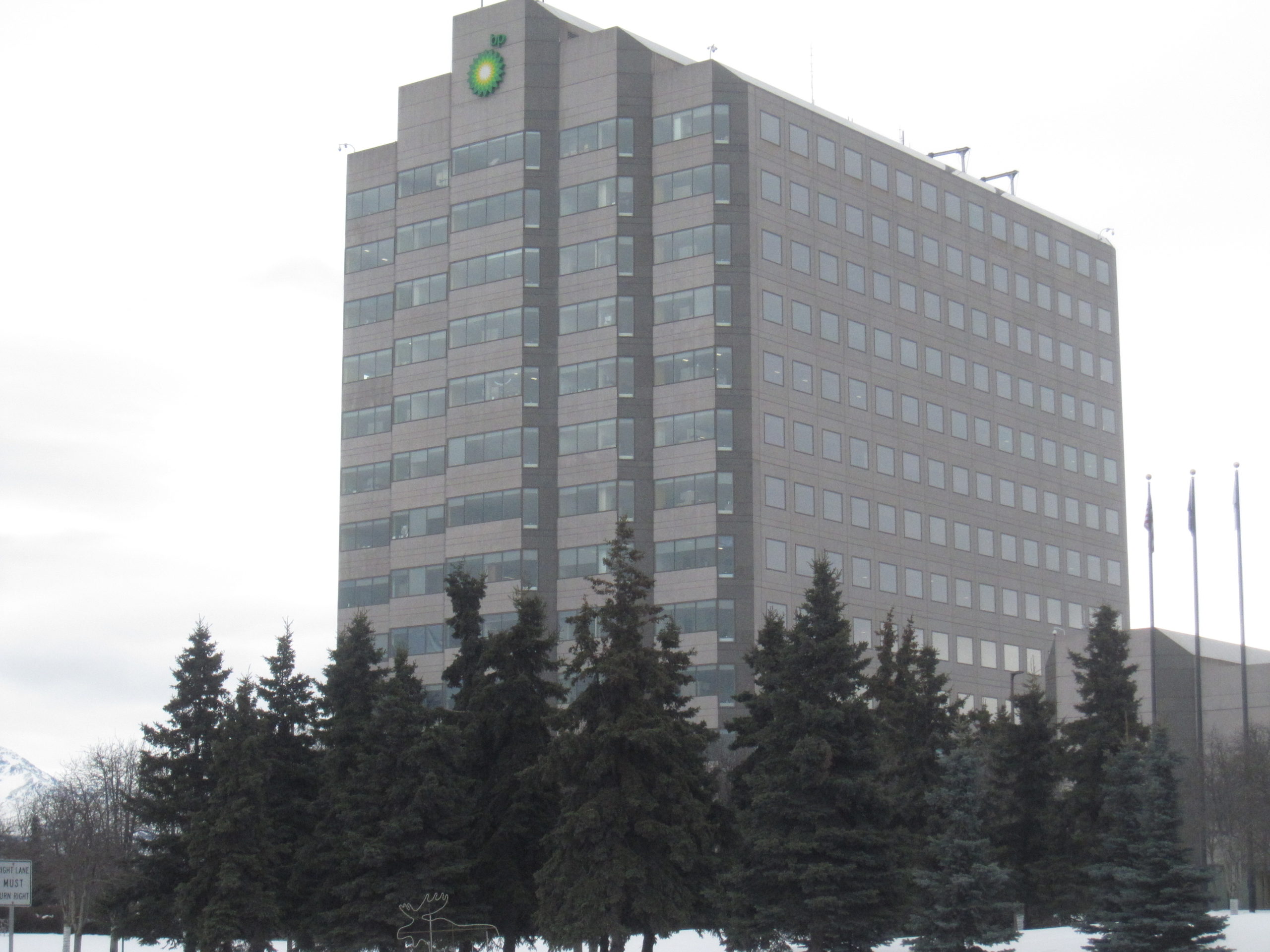How coronavirus and an oil-price crisis could transform the oil industry in Arctic Alaska
Oil exploration contracts and development plans for the North Slope are on hold, while the financing for a major deal could be in jeopardy.

With the coronavirus pandemic still spreading and oil prices tanking, companies operating on Alaska’s North Slope have minimized activities and delayed what were once ambitious plans for expanded development.
The latest withdrawal is by ConocoPhillips, which announced on April 7 that it is ceasing all drilling of new wells. Production from existing wells will continue, but rigs that had been mobilized for exploration and development will be idled, the company said.
[Suddenly, new investment in Arctic Alaska oil looks very unlikely]
Because of the “heightened COVID-19 risk to our North Slope workforce, we are taking action to significantly reduce the number of personnel on the Slope in a managed fashion,” ConocoPhillips spokeswoman Natalie Lowman said in an emailed statement. “To do this, we are making the difficult decision to demobilize our rig fleet. Given the high degree of uncertainty on how the situation plays out, we can’t say how long these measures will be in place.”
The move is a big reversal from just a few months ago. In late 2019, ConocoPhillips was touting one of its biggest exploration seasons in decades, with seven exploration wells to be drilled over the winter.
ConocoPhillips’s rig shutdown follows an announcement by BP Exploration (Alaska) Inc. that it is idling the two rigs it had previously contracted for development drilling.
Both companies had already pared back operations on the North Slope, limiting the workforce to “essential” personnel performing core production duties and lengthening work rotations to reduce the number of flights to and from the oil fields. At the same time it instituted workforce and North Slope travel restrictions, ConocoPhillips had previously announced that two rigs working in the Kuparuk and Alpine units would be idled, a move that by itself was expected to reduce oil output by 2,000 barrels a day, the company said.
[A Prudhoe Bay worker becomes the first COVID-19 patient in Alaska’s North Slope oil fields]
The economic crisis has put a halt to other ambitious exploration plans.
Oil Search, a new entrant in Alaska and is not yet a producer, managed to complete two exploration wells this winter but has put future drilling on hold.
“The exploration plan for next winter is suspended,” said Amy Burnett, an Alaska-based spokeswoman for Oil Search. The company is finishing up this winter’s work, with a few ongoing activities being done “to comply with permitting,” she said.
The Australian company announced on March 27 that it was “suspending all upcoming discretionary activities” except for those required to maintain oil and gas production at its facilities in Papua New Guinea.
[Why Arctic oil development could soon be in crisis]
Results from the two exploration wells, called Mitquq and Stirrup, were encouraging, Oil Search Managing Director Keiran Wulff said in a March 31 statement.
But development of the company’s huge Pikka Unit project, which would get oil from the Nanushuk formation and has the potential to produce more than 100,000 barrels a day, is now pushed back. A final investment decision has been delayed, Wulff said in the statement. “The additional time will allow further value engineering and optimization of the development to take place, with a focus on reducing the break-even of the project, and the integration of the results of the Mitquq and Stirrup wells,” he said.
Last year, Oil Search said it wanted to start Pikka production in 2022, and a development plan was well in the works.
For now, an immediate impact of oil industry turmoil is the loss of state revenues. The latest semiannual Alaska Department of Revenue forecast, issued April 6, predicts the state will take in $1.15 billion less in oil revenues in the current and next fiscal year than what was forecast in December. The steep decline in oil revenues is due almost entirely to oil-price drops, the new forecast said. However, production is also expected to dip and will remain below 490,000 barrels per day, less than a quarter of the peak 2 million barrels produced in 1988.

A key question is whether the current turmoil and cessation of new well drilling will have a lasting impact on Alaska oil economic.
“It comes down to how permanent a shock that they think this is,” said Mouhcine Guettabi, an economist with the University of Alaska Anchorage. “Nobody has a crystal ball. We know it’s bad. We know it’s far-ranging.”
Impacts will vary by company, he said. Companies with higher cash reserves are better positioned to survive the current crisis, while those with high debt are in more precarious positions. For those with little cash and a lot of debt, “It’s going to be really hard for them to pick up where they left off,” he said.
It makes sense the projects are being delayed or canceled, Guettabi said. “All of these decisions come down to what’s economically viable, and now very few projects are economically viable, he said. But those delays are costly and could be “disruptive to long-term plans,” he said.
Among the plans that could be disrupted is Hilcorp Energy Company’s $5.6 million purchase of BP’s Alaska assets.
Hilcorp, which is privately held, previously said that it will use debt to complete the deal. But lenders are increasingly reluctant to finance the purchase, the Wall Street Journal reported.

One credit-rating agency has cast doubt on the entire purchase. S&P Global on April 7 downgraded Hilcorp’s credit rating and said that given current conditions, “we believe it will be challenging for the company to finance this transaction.” Additionally, S&P Global said, it “will be challenging” for Hilcorp to recover the $500 million it has already spent on the purchase should the transaction fall through.
Hilcorp’s debt levels were already considered to be too high even before the coronavirus crisis hit, according to a Moody’s analysis issued in December.
Alaska regulators are showing some concerns about Hilcorp’s ability to complete the transaction in the current financial environment. The Regulatory Commission of Alaska, which has jurisdiction over in-state pipelines, on April 2 issued an 18-page order to Hilcorp and BP seeking answers to a series of new questions about the deal. One asks the companies to explain “whether recent changes in the financial markets have impacted Harvest Alaska/Hilcorp Alaska/Harvest Midstream’s access to the capital necessary to fund this transaction.” Answers are due May 4.
The doubts being raised are a sharp contrast to the confidence expressed a few months ago by oil industry representatives and supporters. At a Feb. 4 Regulatory Commission of Alaska hearing, those representatives and supporters urged the body to approve the transaction as soon as possible. Among those was Rick Whitbeck, Alaska director for a pro-development group called Power the Future. Testifying to the commission, Whitbeck disparaged the skeptics who wanted more information on Hilcorp’s finances as “disenchanted malcontents” with concerns that are “based on an unhealthy and near-lunatic fringe level of anxiety and fear.”
BP said in an April 1 statement that it still expects the transaction to be completed by the end of the year.
Guettabi said he does expect some changes to that proposed sale, a renegotiation at the very least. “I would assume that there’s going to be a reevaluation of the value of the assets,” he said.